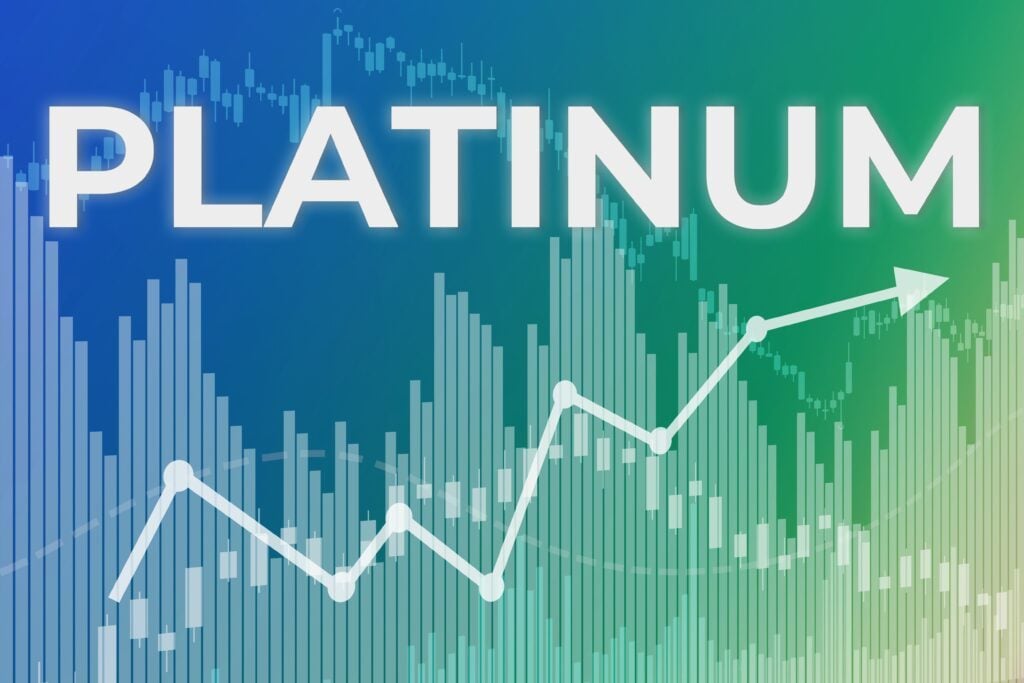When it comes to trading precious metals, most investors opt for gold or silver. That's why many other commodities often slip under their radars. One of these commodities includes platinum, a material that exists since the dawn of the time, but was not discovered by humans until 1735.

Platinum was first mentioned in 1557 by Julius Caesar Scaliger, an Italian scholar who wrote that it was found in a region between present-day Darien and Mexico. Ever since its discovery in 1735, platinum prices have been continuously picking up through the years.
Due to its scarce nature and overall investors' interest, but also because of the constant rise of inflation, platinum remains to be one of the top picks for long-term holding among many investors. So in this article, we are going to talk about the advantages of platinum trading and how you can go about investing and trading in Platinum right now.
There are several different ways you can invest in platinum. Besides owning an actual bar of platinum or platinum ore, which is definitely the most secure way of owning your commodity, investors can also go for forex markets and contracts for differences (CFDs).
One of the most popular options to trade is the platinum commodity. Using the CFDs provided by an authorized brokerage, investors can bet on the future price movements of commodities such as platinum. Investing in platinum CFDs spares investors the inconvenience of managing platinum storage and fees related to storing the commodity.
Investors can trade platinum in both directions, which means that they can place their “bets” on whether they think the price will go up or down. No matter the positive or negative forecast, investors can make their profits if they make the right calls.
On top of everything, trading platinum using the CFDs is usually free, while brokers make small profits from the spread.
Futures trading allows investors the use of leverage to buy contracts that are tied to the price of platinum. If the price starts to fall, investors are obliged to put up additional margins to maintain their positions.
On the other hand, they must also roll futures contracts forward each month, or accept physical delivery. This kind of trading usually requires years of experience in trading and active position maintenance by the investor.
Historically, the platinum commodity hit its all-time low in January 1972, with commodity prices falling to a record low of $97,7. per oz, while it reached its all-time high in March 2008, with prices going for up to $2253 per oz.
Nevertheless, the overall demand for investing in platinum commodities still continues to rise, since commodity investing represents only a small part of the overall demand. Moreover, the rising inflation and the continuous weakening of the US dollar keep the investors' eyes pointed in the direction of platinum, and other similar precious metals.
The majority of the global platinum supply is being produced in South Africa. Since the country accounts for 95% of the world’s platinum reserves and 75% of the global supply, South Africa makes the strongest impact when it comes to driving the commodity price.
Platinum group metals are among the most sought-after commodities in the investment world. As an alternative to stocks, these platinum commodities are less risky than other precious metals such as gold. Trading in platinum allows investors to diversify their portfolios while making substantial profits.
If that’s not all; investing in platinum commodities allows investors to take profit from a weakening dollar, as well as the strengthening in consumer spending. Growths in large industrial economies have historically often occurred at the expense of a strong currency.
On the other hand, the automotive industry seems to be the most influential and impactful industry on the prices of platinum commodities. This means that platinum tends to perform especially well if the automotive industry performs equally as well. In opposition, this means that the uprising demand and development of electric vehicles could potentially reduce the overall demand for platinum. The high price of platinum often makes it unaffordable to manufacturers, so they tend to search and adhere to alternatives.
Many experts think of platinum as a great investment alternative to gold. They assert that platinum prices are way more affordable than gold prices when it comes to investing in precious metals. There are also long-term benefits, which include increased use of platinum in industrial applications, and the platinum's scarcity which makes it an asset of a very limited supply.
What’s more; Automotive sales in Europe have been growing rapidly, but so far there is no sign that the political uncertainty in the industry is having any impact on consumption. On top of that, the platinum reserve depletion and underinvestments in South Africa will continue to constrain any growth in output.
Since the price shifts and the volatility of the platinum market can lead to great profits, but also great losses, investors should always be prepared to take an extra risk before investing in platinum commodities. All in all, trading platinum usually attracts more prominent and sophisticated investors
Investors need to be okay with facing short-term losses while aiming for long-term profit. Even if they decide to invest in platinum commodities, they must allocate only a portion of their entire portfolio to platinum.
Like in other markets, there are many factors that play a part in driving the price of platinum commodities. Some of these factors are predictable, such as those already listed in this article, but there are always those factors one can never predict or forecast.
If investors do their best to accustom themselves to the uncertain nature of investing, they will find themselves to be more prepared when trading. As always, investors should never invest the money they are not ready to lose. Doing the right kind of research before making any kind of investment leads to making the best investment choices.